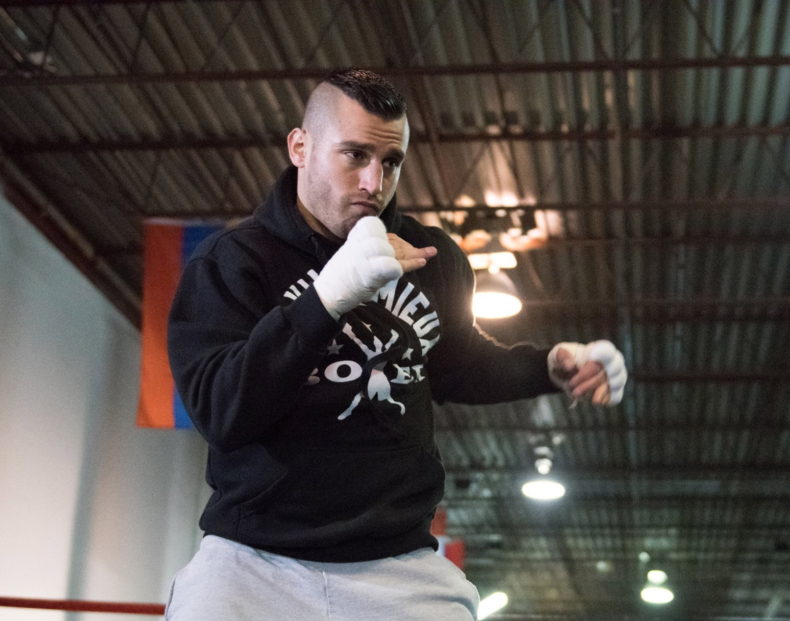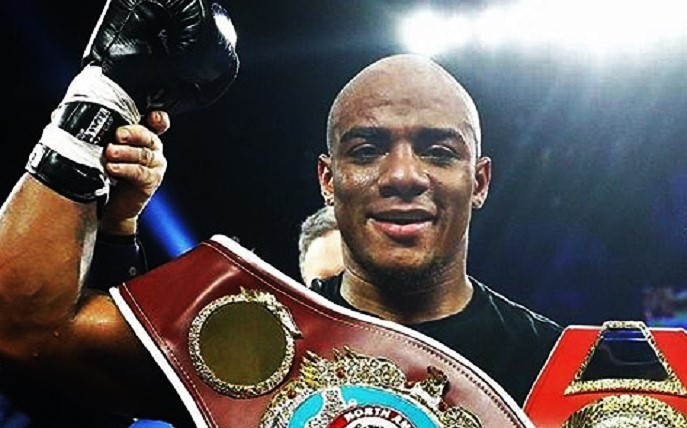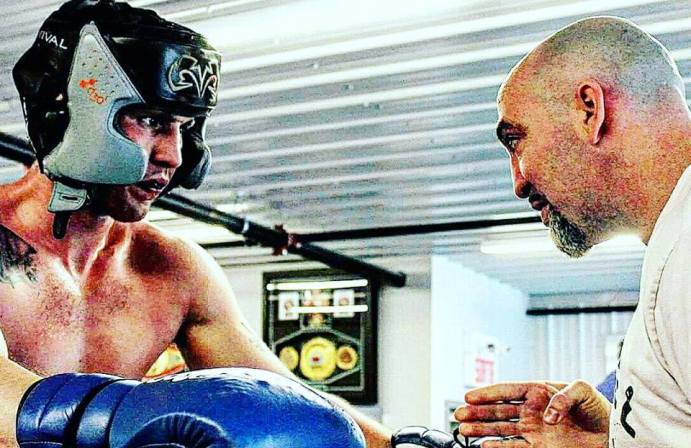Can David Lemieux Reinvent Himself?
It’s easy to forget that former IBF middleweight champion David Lemieux is only 28 and firmly in the midst of his athletic prime. The narrative arc of Lemieux’s compelling career has been multifaceted: prodigious prospect, knockout machine contender, damaged goods, world champion, outclassed warrior, and redemption seeker.
On March 11 at the Turning Stone Resort & Casino in Verona, New York, Lemieux will face fellow concussive puncher Curtis Stevens in a fight imbued with bad blood and massive stakes. Both Lemieux (36-3, 32 KOs) and Stevens (29-5, 21 KOs) are top-10 middleweights, and with the consolidation of belts at 160 pounds, a loss in this kind of crossroads fight can mire a contender in a growing scrapheap of recycled title challengers.
But is this actually a must-win fight for David Lemieux? The issue was debated on the most recent instalment of the HBO Boxing Podcast, and while it was generally agreed that Lemieux, because of his age of past accomplishments, could rebound from a loss to Curtis Stevens, there’s plenty he’ll forfeit should he not prevail.
Indeed, fans and pundits have talked about Lemieux as an ideal opponent for Canelo Avlarez should the Mexican star continue to duck Gennady Golovkin. It’s an easy fight to make as both Lemieux and Canelo are aligned with Golden Boy Promotions, but the reality is that Lemieux needs to show signs of significant progress against Stevens to justify such a match.
Put it this way: If Lemieux loses to Stevens, he can most certainly climb back to his current standing at middleweight; but if he wins, and does so in dominant fashion, Lemieux will have given a strong hint that he can actually be more than just a compelling B-side at the elite level.
The claim that Lemieux is a below average defensive fighter is both accurate and slightly skewed by his almost singular focus on his offensive output. Fans adore Lemieux because he begins every fight by applying relentless pressure and throwing thudding combinations. Other than his fight against Golovkin, Lemieux consistently manages to force his foes to adapt to him. Sure, he’ll eat his share of return fire along the way, but it almost never occurs at the expense of taking a backwards step.
Against Stevens, however, Lemieux backers should hope for some subtle changes in their man’s approach for a few key reasons: Stevens’ punch output, particularly his jab, falls well below the middleweight average; additionally, Stevens is a compact and stocky 5’7″, meaning that Lemieux must prevent him from bullying his way inside; lastly, with both men having withstood Gennady Golovkin’s murderous assaults for eight rounds, an early stoppage, even factoring in the power both Lemieux and Stevens possess, is unlikely (although certainly possible — as is any outcome in this fight, to be perfectly honest).
Despite the animosity and disdain evident during the Lemieux-Stevens promotion, the fight will likely take a round or two to warm up because, whether they can admit it or not, each man has to respect the other’s thunderous punching power. Given Stevens’ paltry overall output, Lemieux has the chance to start with purpose and build a lead by working his jab and consistently changing looks. Stevens will attempt to work his way into punching range, but he often does so without utilizing effective offense to close distance. In these gaps, Lemieux can pepper Stevens with jabs — much like Gennady Golovkin did to him with that abusive piston punch — and punish the New Yorker with his vaunted left hook to the body, which will be a crucial shot because of Stevens’ barrel-chested physique and ability to create a protective shell upstairs.
This isn’t to say that David Lemieux needs to suddenly morph into a pure boxer — far from it. In fact, the last thing one should want to see is Lemieux abandon the aggression and swagger that has taken him so far. The point is that a Lemieux who starts and stays in fifth gear will give Stevens the kinds of opportunities to exchange freely in optimal punching range. And that kind of fight — a phone booth slugfest — creates the framework for Lemieux, who perhaps isn’t quite as sturdy as Stevens, to get hurt.
Lemieux is undoubtedly a phenomenal puncher, but his style, a sort of swashbuckling “I’ll show up uninvited at your house party, drink your beer, and steal your girlfriend” approach, has always felt intrinsically linked to the exuberance and explosiveness of youth. While David Lemieux is by no means old, he is now a more complete athlete with the experience and accomplishments to prove it. The hope here is that his fighting ability and strategic choices continue to adapt to reflect this maturity. Interestingly, recently retired Eye Of The Tiger pugilist Ghislain Maduma gives the intangibles edge to Stevens, citing the fact his trainer, John David Jackson, boasts a decisive win over Lemieux’s trainer, Marc Ramsay, when those two faced off in the first battle between Sergey Kovalev and Jean Pascal.
Even so, Curtis Stevens is the ideal opponent for Lemieux to showcase the breadth of his skills. Post-Golovkin, Lemieux was most recently in a no-win situation against the obscure Cristian Fabian Rios, and the fight, a desperate attempt to impress and appear explosive, disappointingly went the distance, with Lemieux eating some heavy shots in the second and third rounds especially. Before that, a blown up Glen Tapia was an easy mark, and Lemieux did exactly what he needed to. Stevens, on the other hand, represents a return to the class and calibre of foe that will demand every ounce of Lemieux’s focus and abilities.
There are key common opponents that can be brought up to compare Lemieux and Stevens — Gennady Golovkin, Hassan N’Dam, and Elvin Ayala come to mind — but the fight isn’t really about that. Instead, it boils down to whether Lemieux, the more versatile of the two boxers, can truly dictate the tempo and geography of the bout. Off-speed punches, a purposeful jab, and the ability to actually box in retreat are all in Lemieux’s toolbox. All he has to do is pause, take a breath, and resist the temptation to fight in fast-forward until the need actually arises.
— Zachary Alapi
Photo by Bob Levesque.





